
All-In-One Scriptless Test Automation Solution!
All-In-One Scriptless Test Automation Solution!
Powering velocity through measurable business results with a modern approach to legacy application modernization
The IT world advances on new paths and strategies that use Artificial Intelligence (AI) and data-driven business models. Business trends, increasing customer demands, competitive landscape, and digital transformation have forced organizations to modernize their legacy systems with modern technologies. Legacy application modernization supports an enterprise to be agile and flexible while delivering innovative products and services rapidly and effectively. Rather than considering IT as a cost required to drive their business, they understand that technology can be a resource that enhances their business. The legacy systems are reaching a maturity point. Usually, a legacy system not modeled for the cloud is sectioned into a single application and distributed into multiple technologies such as COBOL, PowerBuilder, and Struts.
Legacy systems need modernization when an organization faces the issues such as lack of support of the system or its inability to meet business requirements. Such systems are generally complex to maintain, support, enhance, update or integrate with the new systems due to their architecture, technology, or design. The monolithic application has an impact on multiple applications for each deployment. Vendor dependency is the primary concern of legacy systems as the freedom to add more features (add/modify/update) is not possible. Integrating old legacy systems and modern solutions can be complex for SMBs looking to enhance their work processes.
Businesses need to analyze the existing legacy system to understand the business logic and its functionalities better. There are more perspectives to analyze and assess when finding the legacy. You need to evaluate all the systems to get the existing and potential issues it can show up shortly.
Sun Technologies’ implementation of the new business strategy focuses on building and executing plans to transform the process from its current state to the future. When choosing the right technology and tools to modernize your application, you need to analyze the system’s current state and the details of the legacy code.
Organizations need to analyze
Due to the high licensing cost of client-server applications and the limitations of PowerBuilder, continuing with PowerBuilder is an option, but moving to .Net or Java can be the best choice to adopt the modern technologies and add unique features to your application. Java can ensure the stability and security of the systems. Data is the key to strategic decision-making in enterprises. But legacy data comes with its challenges that include data quality, database design, and architecture problems. These further lead to redundancies and inconsistencies in data.
It is also crucial to observe why systems become legacy systems, exactly how they impact a business, and how companies can modernize such systems. Depending on the IT infrastructure, a hardware system may become outdated, old technology that is no longer available, resulting in it becoming a legacy system. In addition to that, IT systems might become incompatible with modern new software systems, browsers, or platforms that organizations need to run, leading to compatibility issues. Other common problems resulting in a system becoming a legacy system is the lack of support, collaboration tools, frequent upgrades which have to be done manually, offline processes, lack of proper audit, maintenance, and security patches. With the current trend of fast-evolving innovation and technology, enterprise hardware systems typically need to be modernized to maintain the technology’s pace in the data-driven, progressive world.
Sun Technologies’ Application Modernization Services help businesses revolutionize time-tested legacy applications to modern technologies and architecture to deliver greater ROI. We help enterprises modernize individual or entire legacy application portfolio to the latest platforms that provide rich functionality and adaptability with the newest technology stack.
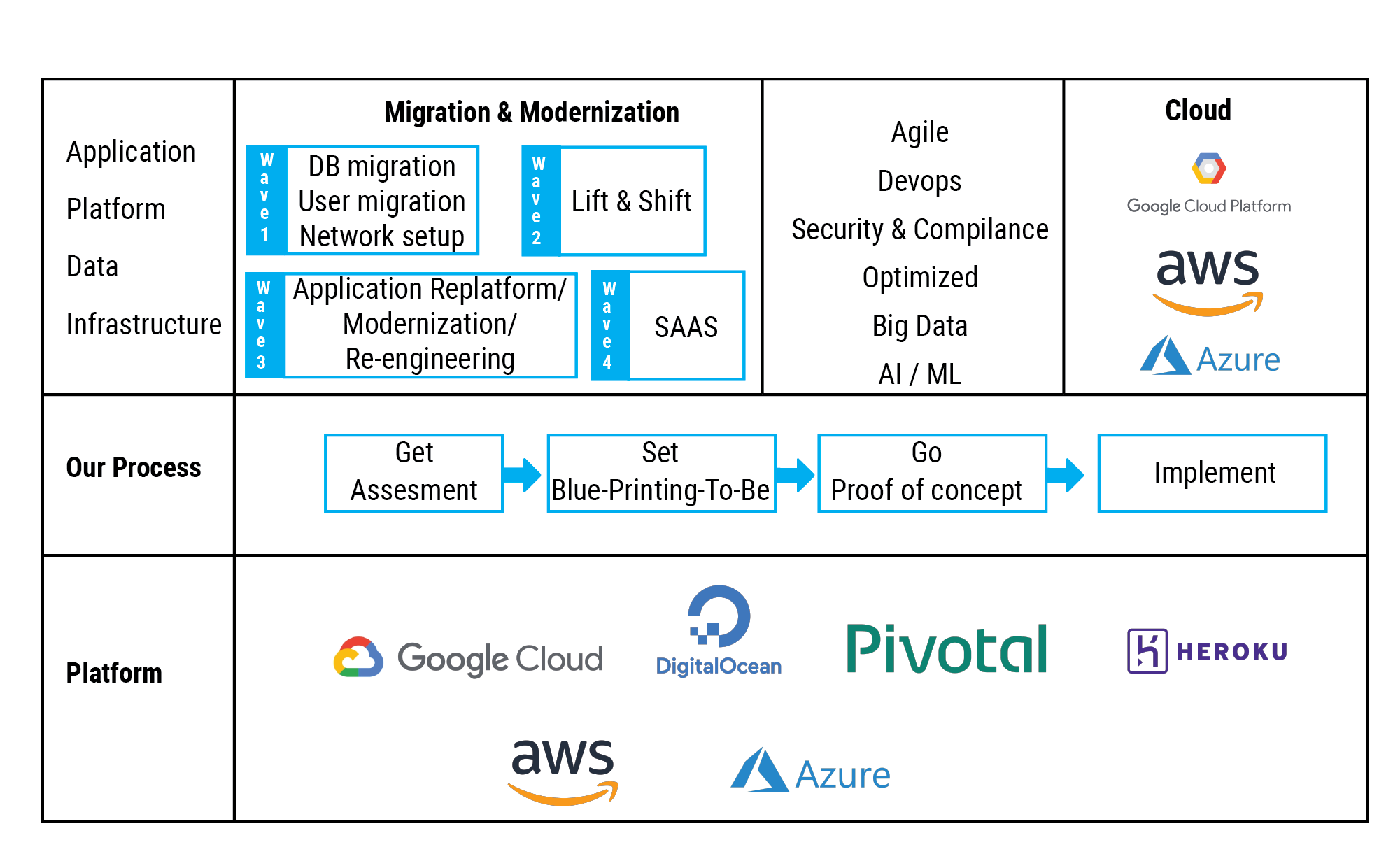
Performing an application portfolio management involves assessing the applications and making decisions about the ongoing maintenance and evolution. APM is all about continuous enhancement and transitioning the portfolio to label emerging requirements. It validates every application based on specific business adequacy parameters such as end-user experience, business & revenue impact, risk factors, the total cost of ownership, compliance, regulations, availability, flexibility, and complexity. After examining the IT landscape, Sun Technologies as a reliable partner delivers its ideal modernization solution for every application. Our Application Portfolio Analysis involves constant measures for cloud readiness for organizations building a roadmap for cloud migration. We perform the process repeatedly and periodically. The wave-based approach reduces the total cost of ownership, delivers instant responses to business requirements, and modernizes an enterprise’s application portfolio. We use this approach in the modernization journey, including Database migration, User Migration, Network setup, Lift & Shift, Application re-platforming, and SAAS.
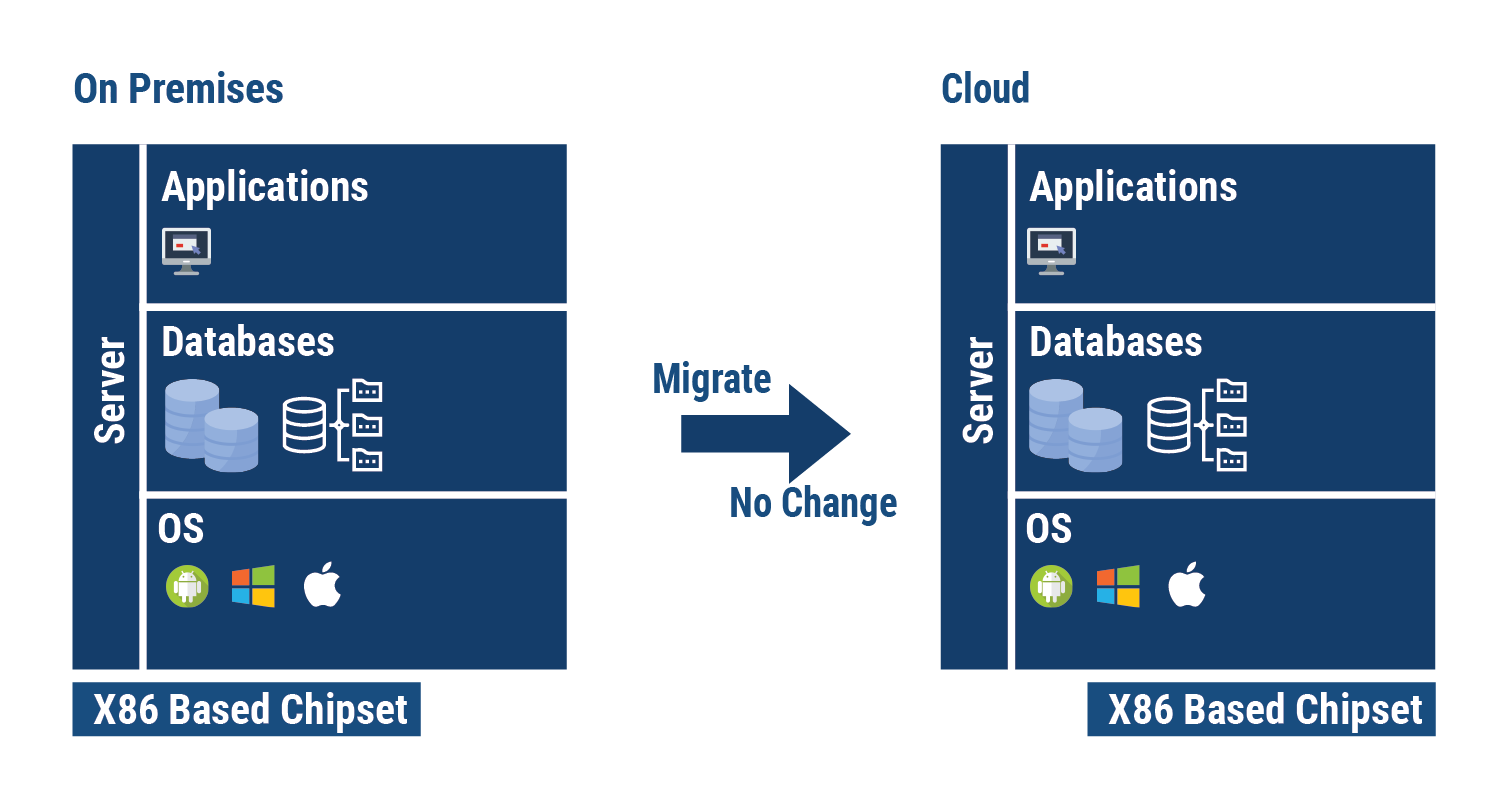
Streamlining your database migration at every phase of your cloud journey allows you to manage your databases globally while optimizing for efficiency and robustness. The decision to migrate from an on-premise server to a cloud server will help you save money and enhance your database’s performance. Check the compatibility issues before the migration process. Sun Technologies’ database designing method in wave 1 is technology-independent. It allows enterprises with legacy enterprise systems to realize their database workload and structure.
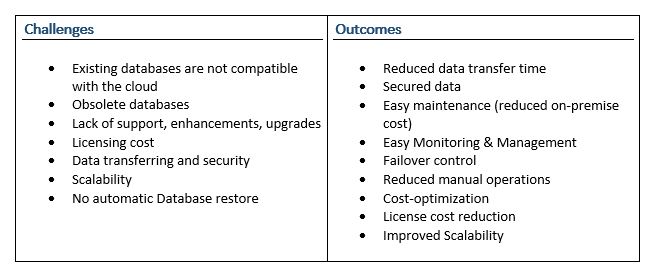
“Lift and Shift” has proven a unique methodology for many enterprises looking out for a rapid, low-risk approach to move their workloads to the cloud. But what if you had an additional option to lift and optimize your primary infrastructure as part of your cloud journey?
Migrating your application and correlated data to the cloud with less or zero changes is the lift and shift migration approach. Applications are expertly “lifted” from the present environments and “shifted” just as it is to new hosting premises, which means in the cloud. There are often no severe alterations to make in the data flow, application architecture, or authentication mechanisms.
The lift-and-shift approach opens ways to legacy application modernization by moving to open and more expandable architecture in the cloud. Organizations ponder lift and shift for solid business reasons such as cost-effective and improved performance and flexibility.
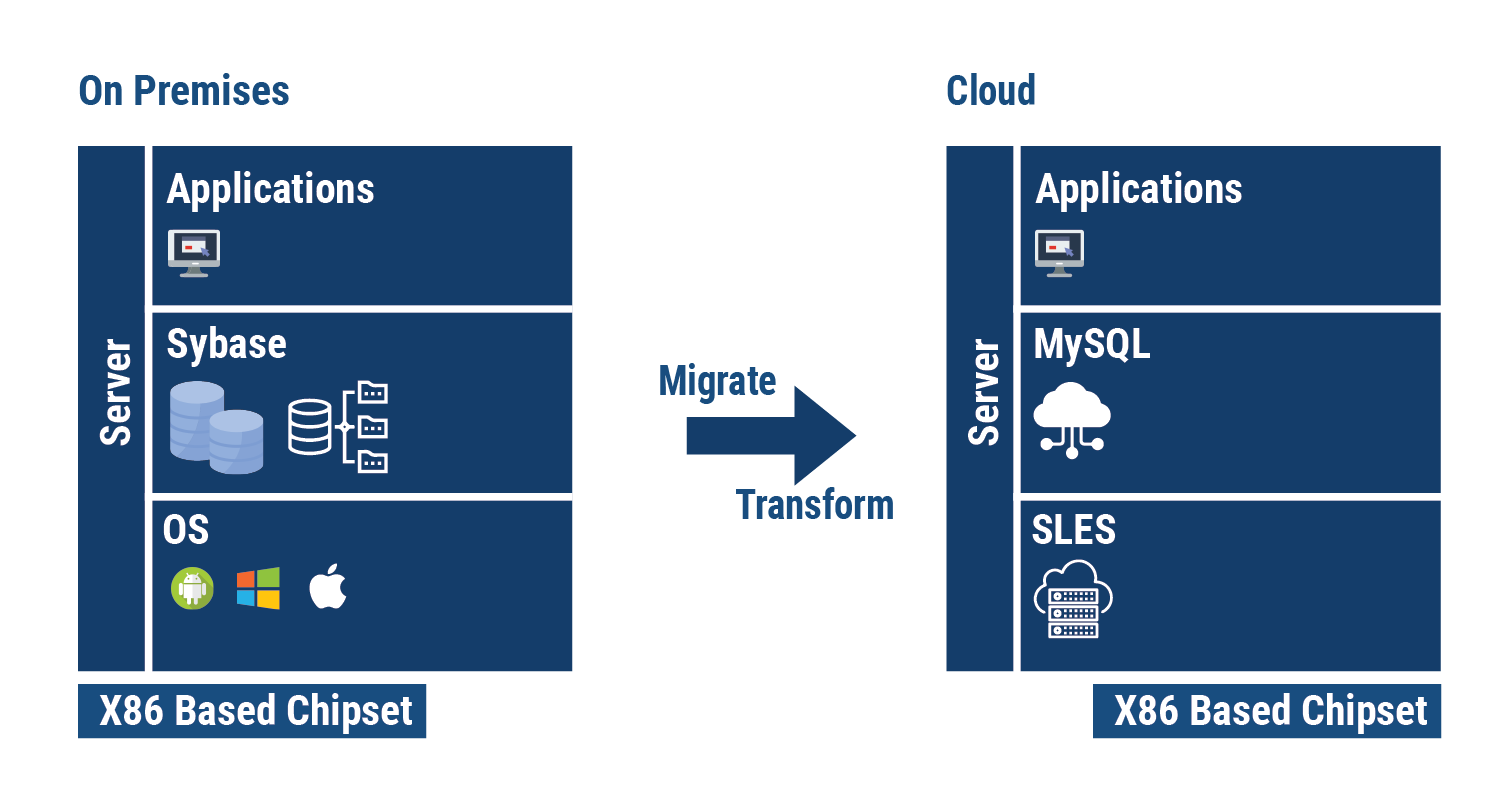
Whether you need to transform accounting systems, CRM or business apps to the cloud, we have the right solution for you. We are there to help you migrate your current workloads to the cloud faster and efficiently. Here’s how we do it:
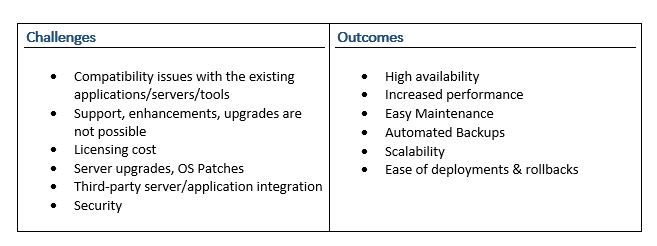
Enterprises need application re-engineering to automate processes, develop and manage system integrations, increase scalability, and successfully integrate legacy systems with modern technologies. Application re-engineering enables the assessment and modification of legacy software code to maintain, reuse and modify it in the future. Sun Technologies’ mature programming processes, unique methodologies, flexible global delivery model, and quality assurance services reduce the project development cost, time-to-market and ensure the highest quality for our customers. Our best practices in application re-engineering along with proprietary tools provide optimized and cost-effective projects as solutions.
Our Application re-engineering solutions label every requirement of the organizations to leverage suitable and modern technology platforms, frameworks, and software products to transform their legacy IT systems and applications.
With our reliable, flexible, fixed-price Multi-Cloud Migration Services and Advanced Product Capability, we automate the process of upgrading Operating Systems of migrated workloads (clones) to make the OS up to a supported version, leaving the source unharmed, in service, and unaffected. All automation runs on a clone of the source in the target cloud to preserve rollback.
Our transformational methodology to application re-engineering delivers high-quality service with the following capabilities:
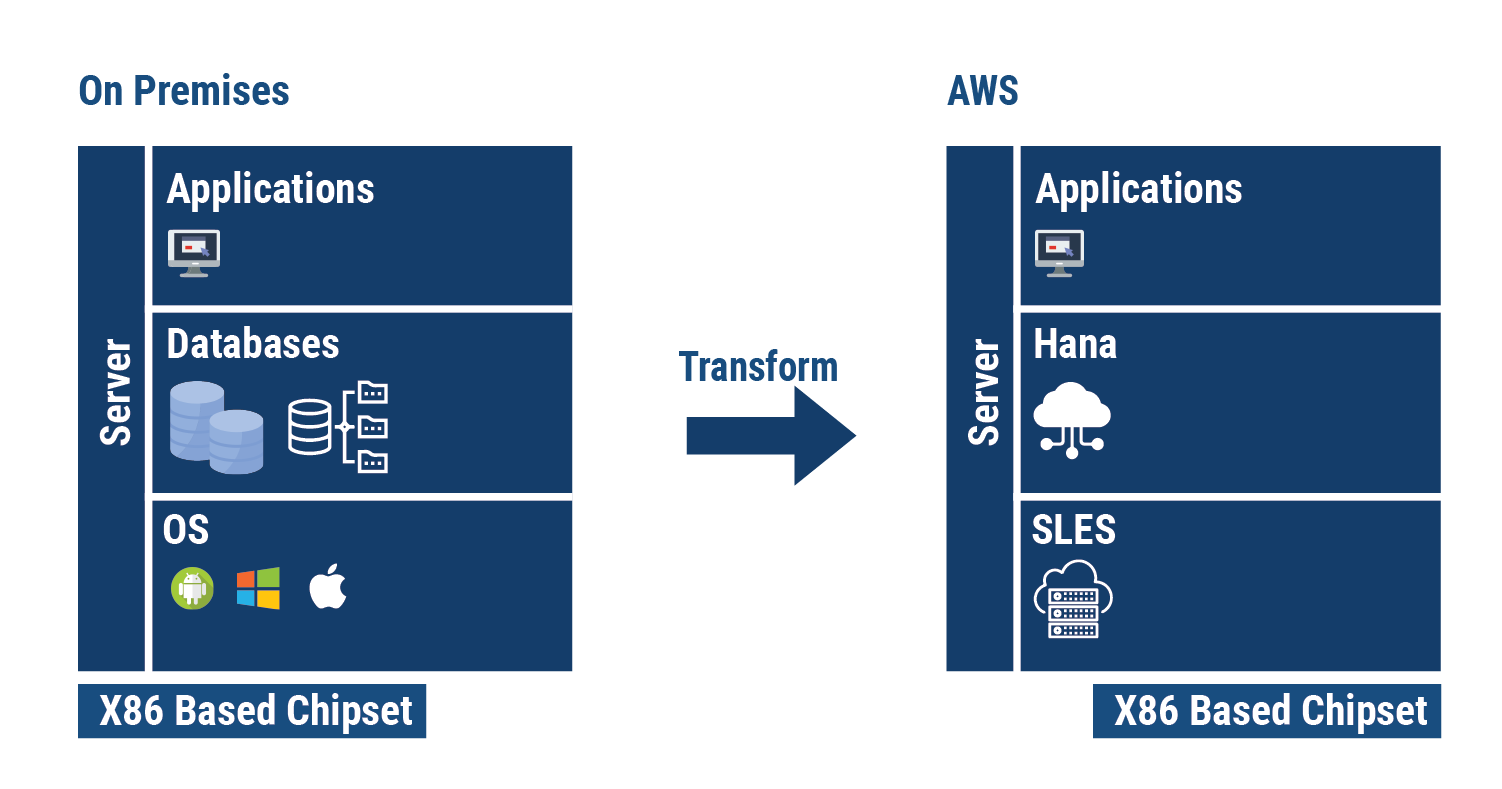
The application layer is changed in application migration, along with the DB and OS. In a few instances, it merely makes the most sense to retire the application. This could be due to its value is constrained, because its abilities are copied elsewhere in your domain, or because it’s more cost-effective to replace it with a new contribution—often a Saas (Software-as-a-service) platform—than it is to migrate the application.
Our approach to moving business systems to cloud-based SaaS applications offers multiple business advantages, unbinding innovation, and enhancing user experience. Companies have moved beyond asking preliminary questions about the latest technologies that include machine learning, artificial intelligence, data mining, and predictive intelligence. The more powerful queries are when and how to adopt these technologies to streamline and automate business processes, update business capabilities, and improve user experience.
The main objectives are to successfully deploy and optimize quality cloud solutions, minimize risk, and enhance business results. Our measured, data-driven approach that incorporates migration blueprint, developing a machine-generated digital baseline and automated tools, can lead toward making a move to the cloud seamless and successful.
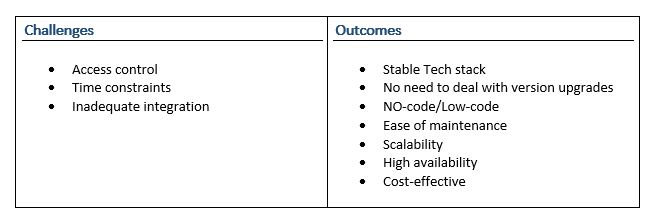
The trendy concept is breaking the monolith into microservices to modernize legacy systems by creating smaller, independent services around specific domains. The microservices could bring benefits such as enhanced reusability, scalability, better integrations, and accelerated DevOps. The fastest and most efficient way to intelligent digital transformation needs the right planning and active collaboration between IT, operations, and business leaders. The microservices development approach helps you to optimize and improve your legacy system. Sun Technologies helps enterprises modernize their legacy PowerBuilder or COBOL applications into flexible and customer-centric JAVA or .NET applications 80% faster with reduced cost and risk. Our AI-powered scriptless test automation tool, IntelliSWAUT, with intelligence streamlines and accelerates legacy modernization testing, boosts the modernization process and ensures enhanced maintainability, scalability, usability, and performance. The automation of the modernization process is done through intelliswaut to fast-track the rest of the process. Microservices architecture is one of the efficient and popular approaches for legacy modernization.
The most common benefits that microservices architecture can offer to businesses include:
Migrating to the cloud ensures continuous availability, allowing businesses to meet the reliability, flexibility, availability, and serviceability expectations of the business. Our proof of concept uses JHipster to build a hybrid cloud-compatible solution. JHipster was chosen because of its ease of use and rapid generation of enterprise-grade applications.
Sun Technologies’ Modernization solutions enable customers on legacy systems to modernize applications, application development, maintenance, and support to minimize issues and enhance productivity. We used DevOps, AI/ML, Big Data Analytics, and Hybrid cloud to fasten the modernization.
Our cloud migration solutions help enterprises move their IT infra, applications, and processes to a protected platform. With cloud migration, we reduce infrastructure costs, speed up time to market, improve responsiveness, increase scalability and accessibility.
Our modernization experts and application leaders find key application requirements and plan for the seamless transformation of the legacy application to a productive and secure framework.
The roadmap to legacy application modernization and innovation is built often on microservices, the latest application development tools, technologies, and cloud migration processes. The objective is to find the best way to modernize the applications with maximum benefits. We help you modernize your legacy IT platforms to drive innovation, improve customer experiences, boost reliability and stay competitive. We make legacy systems more adaptable and effective with our expertise and global delivery capabilities. Our end-to-end engagements in providing legacy modernization solutions with a wave-based approach enable custom levels of client collaboration to mitigate project and operational risks.
Sun Technologies has years of experience in successfully executing application modernizations and can help equip your IT infrastructure’s true potential. Our expert team of strategy and implementation leaders bring proven techniques and their experience with Agile, Cloud computing DevOps, microservices, QA, and APIs to help transform your legacy applications. Our top-notch modernization services support innovation and technology at scale from the initial phase to modernization delivery and ongoing support.
Check out our customer success stories to discover how our clients have benefited from our holistic approach to Legacy Modernization!
To explore more about our Digital Transformation solutions, Contact us!

Vaidy is an experienced lead Solutions Architect heading sales and project delivery for Cloud (AWS, Azure), DevOps and legacy Modernization projects with a demonstrated history of working in the information technology and services industry. He is a strong engineering professional with a Master of Science (MS) focused in Computer Software Engineering from BITS Pilani. He has the capability to manage bigger teams and generate revenue through new Sales and Account Mining.
We help transform your Legacy applications!
We deliver result-driven solutions to boost the competency level and productivity.